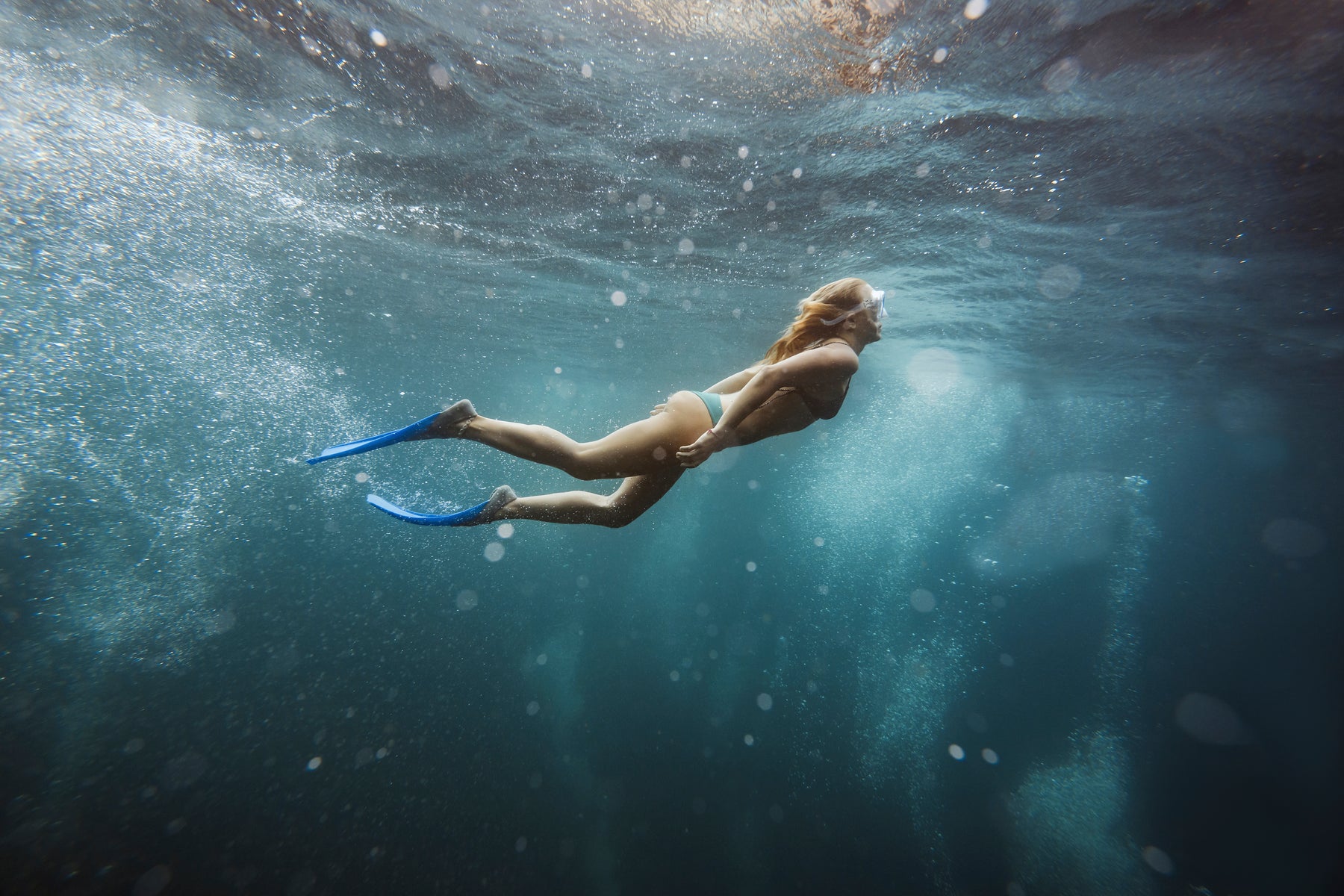
Fitness For Freediving and Spearfishing
One of the most underemphasized parts of becoming a world class diver is diving fitness, health, and the training you’re doing outside of the water. Freediving requires your body be in not only the best possible shape it can be in, but a particular kind of shape that is distinct from that of the shredded powerlifter.
Firstly, you want lots of cardio. Many lifters will tell you “cardio hurts your gains” (which simply means it causes you to burn off the added muscle from working out), but when you’re working out for freediving, you’re not doing it to build tons of muscle and look ripped, you’re doing it to be better freediver, which means compromising on other workout goals. Cardio is important because it trains your muscles and cardiovascular system (including your lungs!) to operate more efficiently. Even though the goal in freediving is to get your heart rate low, getting it raised through cardio is essential to proper preparation. Some of the best ways to train cardio for freediving are running, swimming, and jumping rope. If you’re training cardio above the water, you might want to look in to an altitude mask, which presents resistance and restricts the amount of air you can breathe, which further trains you to operate at an oxygen deficit.
Second, never skip leg day. As a freediver, your legs are far more important to you than having a built back or chest or biceps, because they are your engines under the water. It is recommended to build your leg days in earlier in the week (yes, that is plural) so that your muscles have time for full recovery before the weekend’s diving. The sauna is also a great place for muscle recovery after a grueling leg day!
Third, apnea exercises. Getting a nose clip is necessary for most of these. There are more extensive guides on static apnea tables elsewhere on our site, but two exercises you should add to that daily routine are apnea walks (walking on a breath hold) and diaphragm stretches (fully emptying your lungs and sucking in your stomach to stretch your diaphragm muscles). You can find guides for diaphragm stretches here. Another kind of static to integrate into your routine is to do every set of lifting weights on a breath hold. The goal here is to lift lighter weights with more reps to really work on your breath hold under strain. If you choose to do this in the gym, make sure you have a spotter.
Lastly, a sample split. On each day you should also integrate around 15-20 minutes of cardio before your workout, except on leg days. On days when you don’t do apnea exercises in the gym, try to work them into some other part of your day. It’s never a bad idea to go for an apnea walk during your lunch break!
Monday - Lower A Legs (4 sets each)
- Apnea Exercises
- Weighted Lunges
- Leg Press
- Leg Extension
- Leg Curls
- Calf Raises
Tuesday - Upper Body (3 sets each)
- Cardio
- Dumbbell bench press
- Cable chest fly
- 60 degree dumbbell press
- Lateral raises to front raises (As Many Reps As Possible)
- Row
- Lat pulldown
- Incline curls
- Tricep pushdowns
Wednesday - Legs 2 Electric Boogaloo (4 sets each)
- Apnea Exercises
- Barbell Squat
- Deadlift
- Abductor machine
- Leg extension
- Leg curls
- Calf raises
Thursday - Chest and Back (4 sets each)
- Cardio
- Bench Press
- Incline bench press
- Chest fly
- Close grip row
- Lat pulldown machine
- Rear delt flies
Friday - Shoulders and Arms (4 sets each)
- Cardio
- Bicep curls
- Tricep pushdowns
- Hammer curls
- Skull crushers
- Preacher curls
- 60 degree dumbbell press
- Reverse cable shoulder fly
- Shrugs
Saturday/Sunday - DIVE DAYS
We hope this article helped you think about freediving fitness in new ways, and if you have any questions for the shop feel free to call us at +1-813-867-3250!
